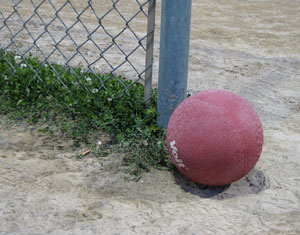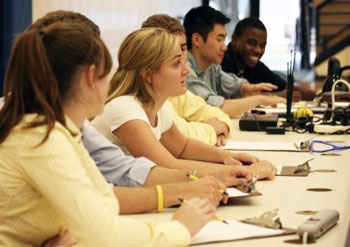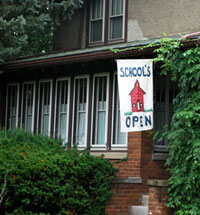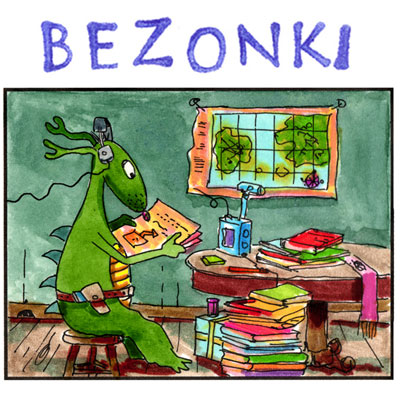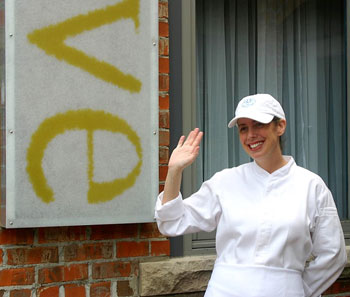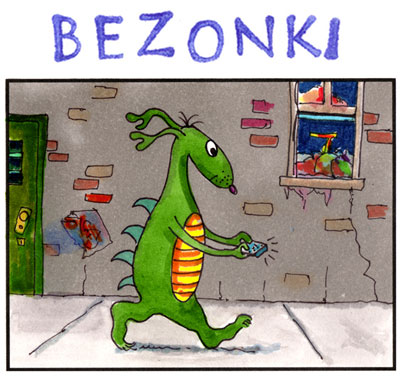Skatepark Rolls Towards Design

Ready to launch from the lip of the Riley Skatepark in Farmington Hills, Michigan. (Photo by the writer)
Last Saturday, the Ann Arbor Skatepark Action Committee loaded up the french-fry-oil fueled BTB Party Bus with as many local decision-makers as it could find and steered a course for Farmington Hills.
They wanted to show city councilmembers, park advisory commissioners and staff planners first hand what a free concrete skatepark looked like.
The field trip itself was meant in part as fuel for the imagination as the committee rolls towards an Oct. 18 skatepark design workshop, which starts at 2 p.m. at Slauson Middle School, located at 1019 W. Washington. It’s free and open to the public.
The planned location for the park is the northeast corner of Veterans Memorial Park at the intersection of Maple Road and Dexter Avenue, on Ann Arbor’s west side.
Almost a year ago, at its Dec. 1, 2008 meeting, the Ann Arbor city council passed a memorandum of intent to develop a skatepark at the Veterans Park location. Now the question facing skatepark supporters is: Where’s the money for building and maintaining the skatepark going to come from? [Full Story]









